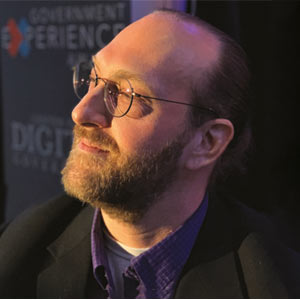THANK YOU FOR SUBSCRIBING

Technology Impacts Higher Education's Critical Challenges
John Kopcke, SVP & CTO, and Ellucian.


John Kopcke, SVP & CTO,
Higher education is facing an unparalleled level of change and challenge. Colleges and universities are under intense pressure to make education more affordable while being held accountable for measuring outcomes and improving student success rates. If this were not enough, they must meet these challenges in the face of falling enrollment, decreased funding, rising student expectations, and disruptive forces like edX and Coursera. More and more, we are seeing that higher education leaders recognize that the only way to navigate these challenges is through the strategic and innovative use of technology and data analytics. Specifically, we are seeing three major trends:
Reducing administrative costs and driving IT efficiency
Just as the insurance and banking industries realized the need to reduce administrative costs and streamline the customer experience, higher education institutions are looking for ways to automate routine processes, eliminate paperwork, and enable more self-service. One of our clients was able to process an additional 32,000 applications with no additional staff and free up hundreds of finance-related work hours by putting technology to work. These cost savings help reduce the rate of tuition growth and allow staff to focus more on educating students and less on bureaucracy.
In a world marked by shrinking budgets, IT departments need to free up the time and resources from core activities to drive these valuable new initiatives. Many forward-looking CIOs have found freed up capacity and resources by using standards and APIs to enable faster system integrations, and are pushing their software vendors to deploy more flexible and modern architectures. Recognizing this new reality, we have doubled our investment in modernizing our core student administration systems. And customers are starting to see the benefits. Our customers are deploying our mobile solution in hours using our new extensible architecture and pre-built APIs.In the past, this could have taken months.
And of course we are seeing more interest in cloud solutions and services. Today, institutions can host entire software systems in the cloud, as well as discrete services like the electronic sending and processing of transcripts. As a result, every one of Ellucian’s new solutions is built for cloud delivery. We are also seeing increased interest in managed
Improving outcomes by focusing on the student lifecycle
Higher education is a relationship-intensive endeavor, and technology is essential to tracking, managing, and deepening student relationships from beginning to end. As a result, we are seeing a tidal wave of interest in CRM-related technologies. The connection starts with identifying and then courting the right-fit student for an institution.Recruiting software provides data analysis capabilities to determine the demographic profiles of students who are most likely to do well at an institution. Additional tools enable recruiting staff to send personalized communications to these prospects, giving them the right information at the right time, and demonstrating to them the personal experience they will have at the institution. Institutions report measurable increases in enrollment as a result. One of our clients was able to increase enrollment 21 percent – with no additional staff or advertising costs by applying best practices and deploying our recruiting system.
After acceptance, an institution needs to continually engage with students, track their progress, and offer support where needed. The diversity of the student base makes this is a very complex and large-scale effort that can only be managed with CRM technology that is deeply integrated into the existing administrative ecosystem. For a first generation student, the complexity of applying for financial aid can be overwhelming;while home sickness can cause a traditional residential student to fall behind on coursework. Institutions offer services to address these challenges, but first the students need to be identified and then made aware of the resources. Technology supports the complete spectrum, providing the analytics forearly detection and the tools for personalized intervention and engagement,which together reduce friction and clear the pathway to success for a student. The increased student success not only meets an institution’s mission, it also translates into additional dollars in the many states where funding is now based on performance.
At any point in the student’s lifecycle, they need to be able to interact easily and on demand with the institution and that means mobile. Millennials who live on social media expect that any service – from complex processes like paying for courses, to seemingly mundane ones like finding the nearest available parking spot – be available anytime, anywhere, and from any device.
For the past decade, self-service portals have been the main stay of delivery of resources to end users. But Millennials want to interact with their institution the same way they do their favorite social media outlets. This requires a mobile framework that integrates with the administrative system and plays well with all the other interdependent parts of the digital ecosystem. Meeting student expectations for the user experience is essential to remaining competitive, and it reduces barriers to accessing critical administrative and learning resources.
Leveraging data to make smarter, impactful decisions
Big data is hitting the campus in a big way. Five years ago, the focus was on developing department-level reports. Today’s leading institutions are moving forward and focusing on crossfunctional data analytics that can drive real action. This requires a campus-wide, single source of authoritative and real-time data. With that foundation in place, executives can apply analytical tools to drill down and identify linkages that contribute – or detract from - student success, enrollment, cost savings, and other strategic objectives. Institutional leaders can also give constituents at every level tools to weigh their decisions through the lens of their impact on strategic outcomes, driving stronger institutional performance. More than ever, it is important that data flows between systems and that BI tools place an emphasis on action.
Higher education is no longer about ivory towers and storied traditions. It is a fast paced sector under increasing pressure to deliver measurable outcomes and to reduce costs. These same pressures and objectives drive our investments and direction in technology. It’s why we’ve made a big investment in the Ellucian Extensible Ecosystem, afresh architectural approach that strengthens our customers’ investments and accelerates their application of new technologies.
Weekly Brief
I agree We use cookies on this website to enhance your user experience. By clicking any link on this page you are giving your consent for us to set cookies. More info
Read Also
Artificial Intelligence - Myths And Truths
Sustainable Future through Innovative Technology Solutions
The Future Relies on Augmented AI
Digitalization with the use of digital technologies/Improving business through digital technologies
How Marco's Pizza Leaned On Technology To Succeed Amid The Pandemic By Quickly Pivoting To Contact-Free Delivery And Curbside Carryout
Bunnings Diy Digital Transformation
For a Smarter City: Trust the Data, Ignore the Hype
Smart Community Innovation for the Post Pandemic





















